Pulitzer Center Update May 1, 2024
Reflecting on 50 Years of Covering the Environment
Jon Sawyer, CEO and president of the Pulitzer Center, was the keynote speaker on May 1, 2024, at the Wilson Center's commemoration of World Press Freedom Day (May 3), focused this year on the importance and risks of environmental journalism. In his remarks at the event in Washington, D.C., Sawyer reflected on threats faced by Pulitzer Center journalists covering the environment, and on his own experiences covering the topic, at the Pulitzer Center and before that at the St. Louis Post-Dispatch.
Sawyer's keynote was followed by a discussion led by Meaghan Parker, past executive director of the Society of Environmental Journalists. Panelists included Amrita Gupta, senior editor at Earth Journalism Network; Jeje Mohamed, senior manager for digital safety and free expression, PEN America; Clayton Weimers, executive director at Reporters Without Borders USA; and Sandhya Ravishankar, independent journalist.
What follow are Sawyer's remarks and photos.
Thanks to the Environmental Change and Security Program and the Society of Environmental Journalists for organizing this important conversation in advance of World Press Freedom Day this Friday.
Thanks also to the Wilson Center for all that it does, and for the support of so many here over the past two decades as we have worked to make the Pulitzer Center a venue for reporting, engagement, and learning on some of the big issues that affect us all.
Environment is arguably the biggest, most existential of them all, notwithstanding the horrors of Gaza, Ukraine, Sudan, and the tensions with China and within our own country.
We are seeing already the consequences of unaddressed climate change, the loss of biodiversity, the relentless pressures from increasing population, and the inherent contradictions of unfettered capitalism.
We are also seeing the pressures in covering this crisis on journalists, and journalism, in an era when the legacy media model is broken and most news organizations lack the resources they need to expose abuses, trace supply chains, and hold corporations and governments accountable.

Image provided by the Pulitzer Center.
We saw this firsthand two years ago this June, when we brought 100 environmental journalists from across the globe to our Interconnected climate conference here in D.C.
On the first morning of the workshop preceding the conference, we learned that Dom Phillips, a British correspondent for The Guardian based in Brazil and someone many of us knew, had gone missing in the Javari Valley along with Bruno Pereira, an Indigenous rights activist.
In this photograph from the conference we’re holding signs with images of the two, and text saying, “Where are Dom Phillips and Bruno Pereira?”
By the end of the conference, working with the members of the Amazon Advisory Committee of our Rainforest Journalism Fund, we had approved four emergency grants for journalists to investigate what had happened to Dom and Bruno, and to continue the work they had begun.
Within a week we knew that Dom and Bruno had been murdered.
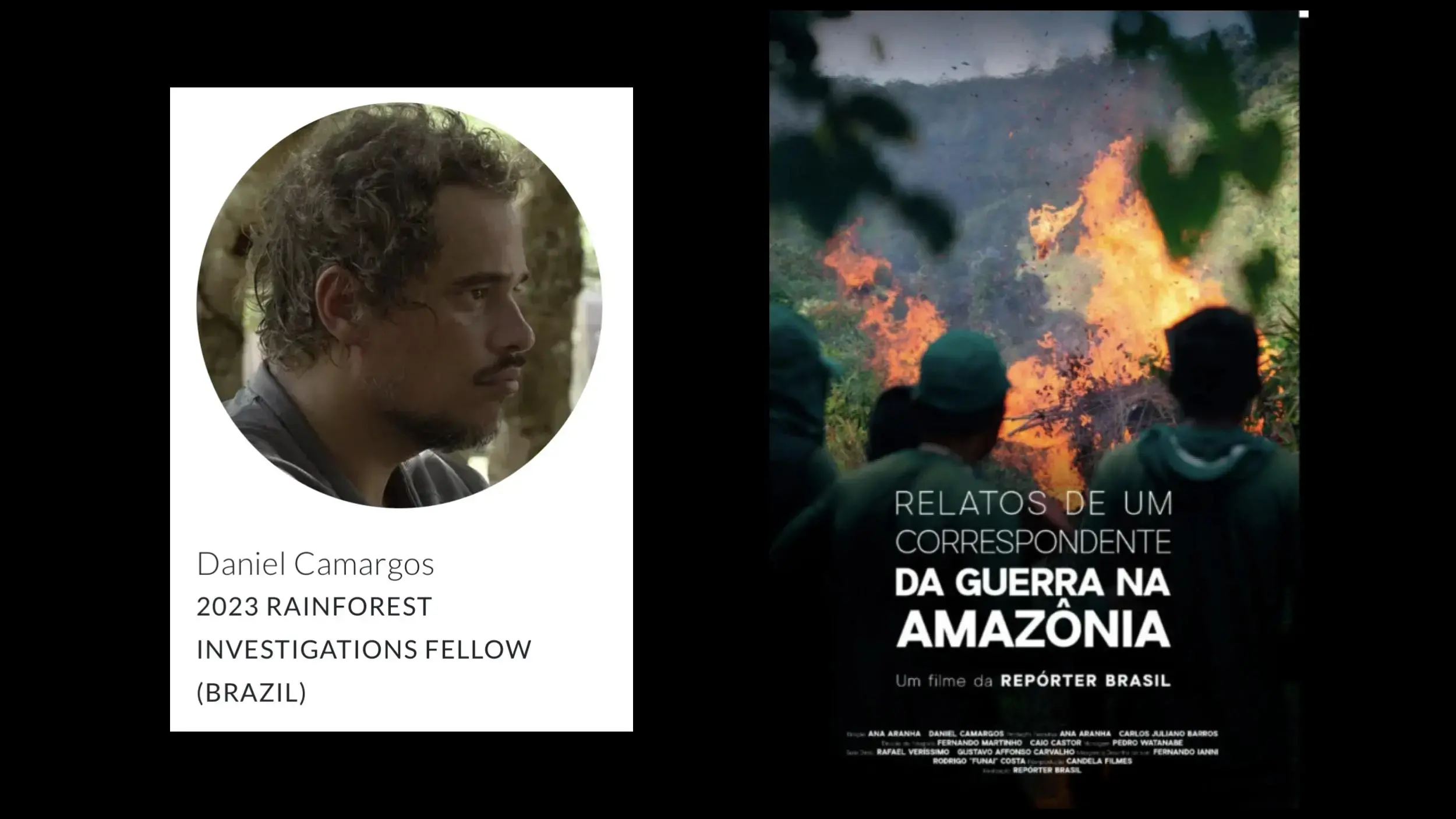
Images provided by the Pulitzer Center.
In the months that followed the stories we supported with Agência Pública, Repórter Brasil, and others helped expose the law-enforcement and policy failures by the government of Jair Bolsonaro that set the stage for the murders. They detailed new efforts by the Indigenous tribes of Javari Valley to protect their lands against exploitation by illegal fishing and drug trafficking. And a documentary by Repórter Brasil, centered on our grantee Daniel Camargos, a veteran Brazilian journalist who had worked closely with Dom Phillips, showed the toll this work takes on everyone involved.
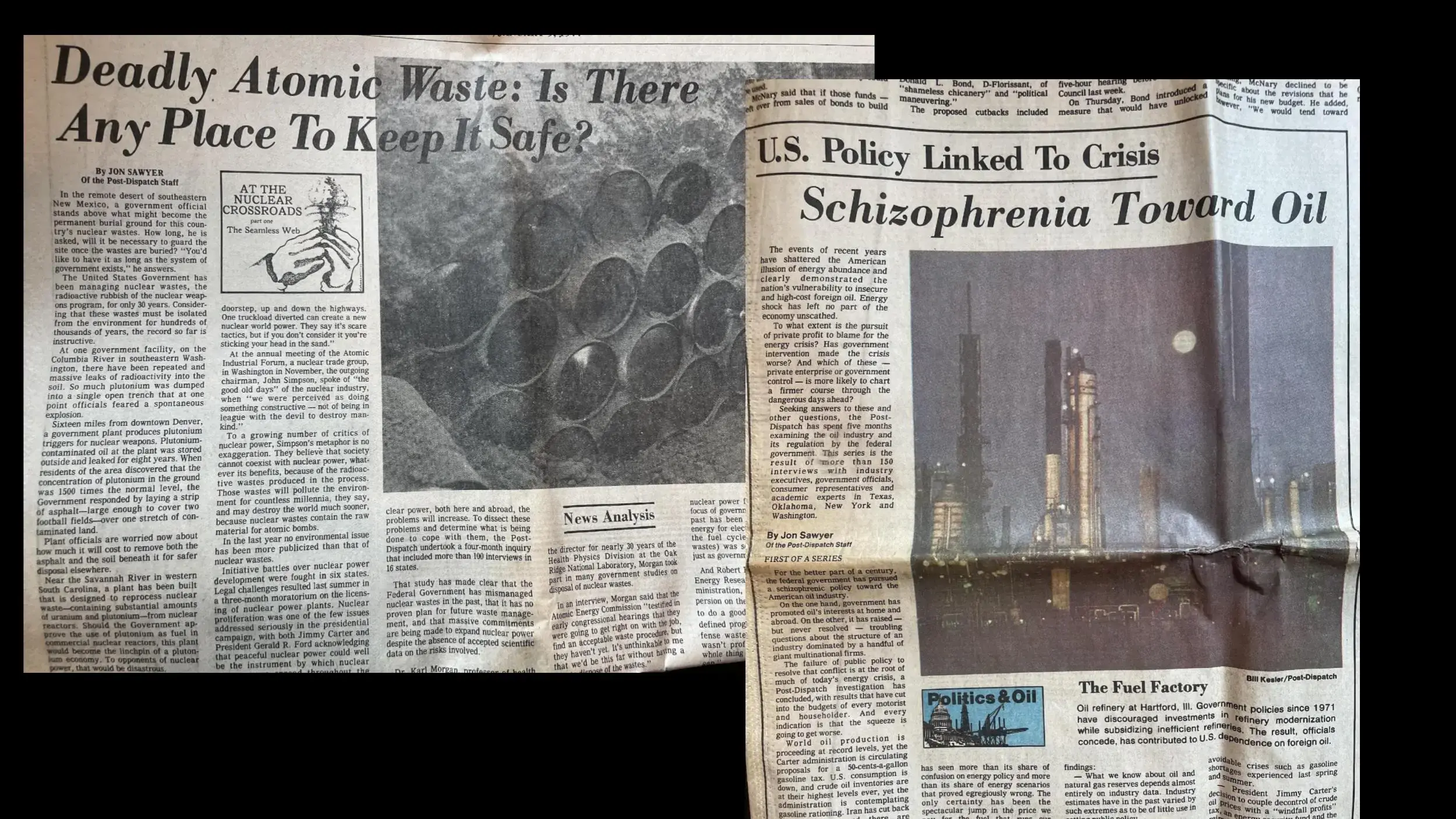
Images provided by Jon Sawyer.
Meaghan Parker asked me to make this talk in part because she knows we’re in the process of selecting a new leader for the Pulitzer Center, to succeed me this summer, and she thought it might be interesting to hear my reflections on environmental journalism, during my nearly two decades at the Pulitzer Center and for three decades before that with the St. Louis Post-Dispatch.
I heard a talk last month by Ron Chernow, the great biographer of Hamilton, Grant, Rockefeller, and more. He recounted the surprising fact that as an undergraduate at Yale he never took a history course — and that maybe that lack of background made each of his projects more compelling, more fresh, to him.
I also went to Yale, just after Chernow. I took a lot of history courses, and plenty of English literature, but not a single course on science. So naturally my first big project at the Post-Dispatch was a six-month investigation of our country’s failure to develop a safe permanent solution for the disposal of radioactive waste from nuclear power plants.
That led to similar long projects on the problematic futures of oil and coal and to reporting on President Jimmy Carter’s bold embrace of solar power and renewables — and on Ronald Reagan’s equally bold reversal of those policies after his election in 1980. I think — I hope — that my lack of background in these complex topics made me a better translator for the broad public I was hoping to reach.
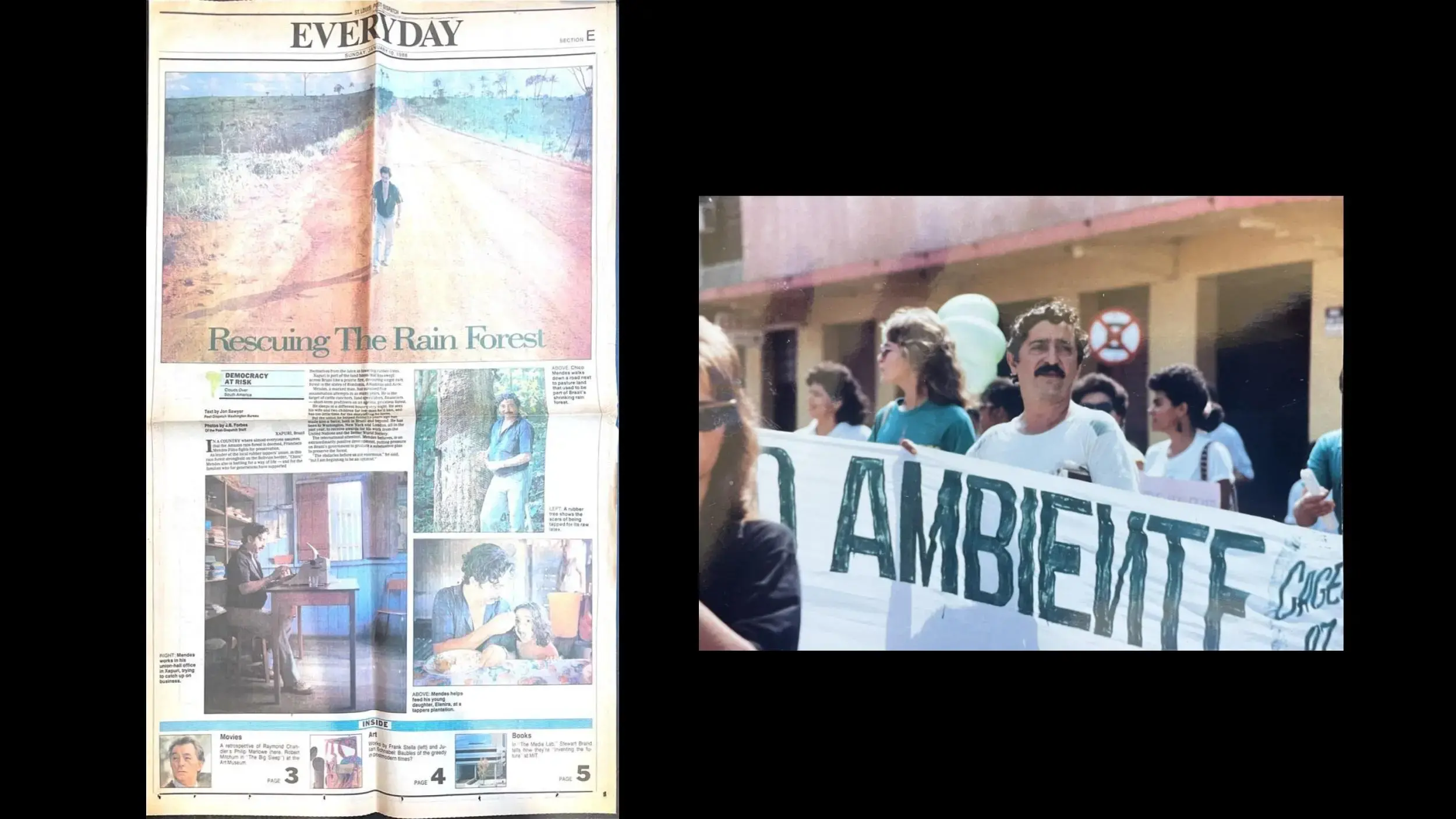
Images provided by Jon Sawyer.
A few years later, in 1986, I had my first experience in rainforests, traveling with Chico Mendes, a rubber tapper from a remote district of Brazil’s Amazon who had become a charismatic leader in protests against the cattle ranchers and land grabbers who were just beginning their assault on the world’s largest rainforest. Chico was murdered a year later, an early lesson, for me, in the high stakes and grave risks at play in the fight over vulnerable, valuable land.
In 2006, with seed money from members of the Pulitzer family, I started the Pulitzer Center, with the idea of filling gaps in coverage of big systemic issues and making journalism the focus of educational engagement in schools and universities. The Wilson Center’s Rob Litwak gave me brilliant advice from the get go; an endorsement from Lee Hamilton was crucial in reassuring the initial seed donors that this was an investment worth making.

Some of the reporting supported by the Pulitzer Center. Images provided by the Pulitzer Center.
In the years since, we’ve grown far more than I ever imagined — now supporting 200-plus reporting projects each year, partnering with over 50 universities and hundreds of K-12 schools across the globe, with a staff of 60 journalists, educators and engagement specialists now based in 15 countries.
The range of topics and outlets has been broad and deep, including on the environment: the special issues of The New York Times Magazine devoted to Nathaniel Rich’s Losing Earth and Abrahm Lustgarten’s reporting on climate migration, Ian Urbina’s Outlaw Oceans Project, multi-outlet projects on the health effects of pollution and of artisanal gold mining, and a RECENT wonderful, upbeat series in The Christian Science Monitor on the “climate generation” that may save us all.

Images provided by the Pulitzer Center.
One of our most memorable projects — and likely not replicable today — was Ecological Civilization, a convening at the Yale Center in Beijing in 2015 that we organized with lots of help from Jennifer Turner, director of the Wilson Center’s China Environment Forum. The symposium featured Chinese and international environmental journalists, business, academic and religious leaders, and the deputy director general of China’s ministry of environmental protection.
Coverage of the environment has been a constant focus of our work throughout, as have threats to defenders of the environment and to the journalists striving to tell their stories.

Images provided by the Pulitzer Center.
An early project with Saul Elbein, for VICE News and California Sunday Magazine, told the chilling stories of radio journalists murdered in the Philippines and local journalists in Cambodia.
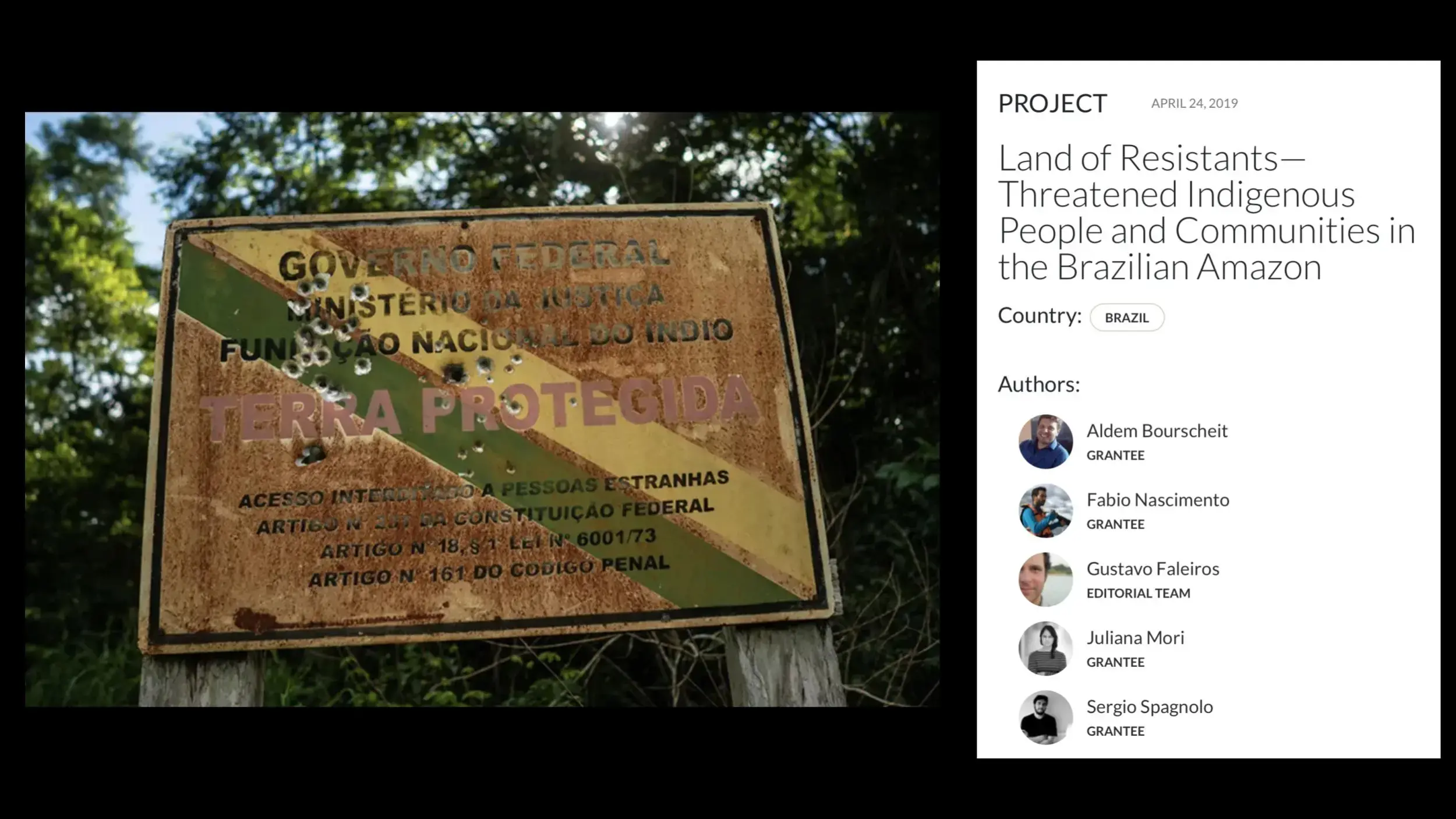
Images provided by the Pulitzer Center.
Gustavo Faleiros, now our senior Environmental Investigations editor, worked with a team at InfoAmazonia, Consejo de Redacción, and other outlets on a project that detailed a staggering 1,357 attacks against Indigenous defenders of the Amazon environment between 2009 and 2018.
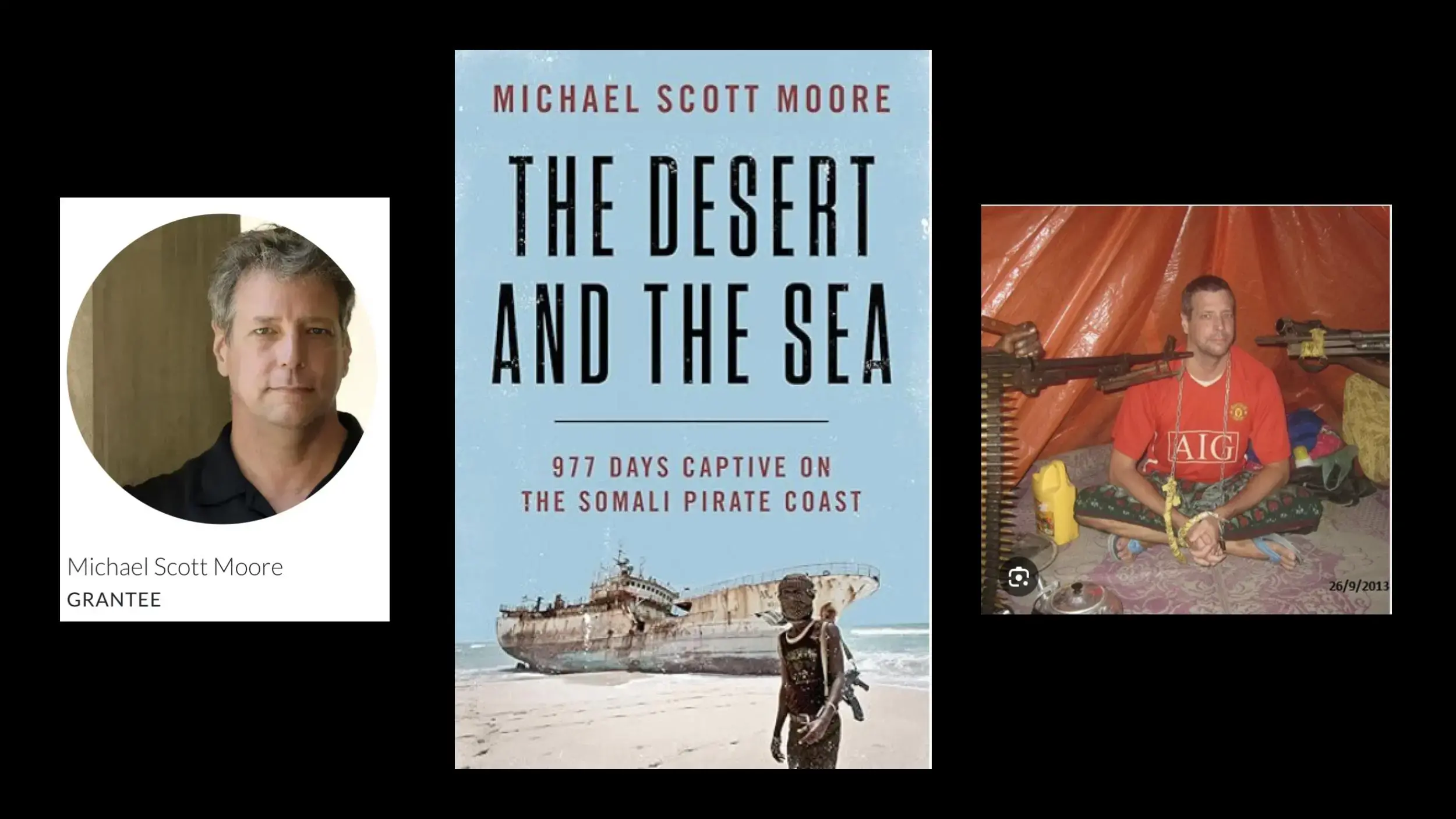
Images provided by the Pulitzer Center.
The single most difficult challenge we’ve faced at the Pulitzer Center was the kidnapping of our grantee Michael Scott Moore in 2010. He was on assignment for The Atlantic, writing about ship piracy off the coast of Somalia — in part an environmental story, since over-fishing by international players was one of the reasons some Somalis turned to piracy as an alternative means of livelihood. Michael was held for 997 days — and there wasn’t a day during those awful months and years that his situation didn’t weigh on us, as we worked with his family, friends, the FBI, and others to secure his release. If you haven’t read The Desert and the Sea, and Mike’s other deeply reported, insightful books, I hope you will.
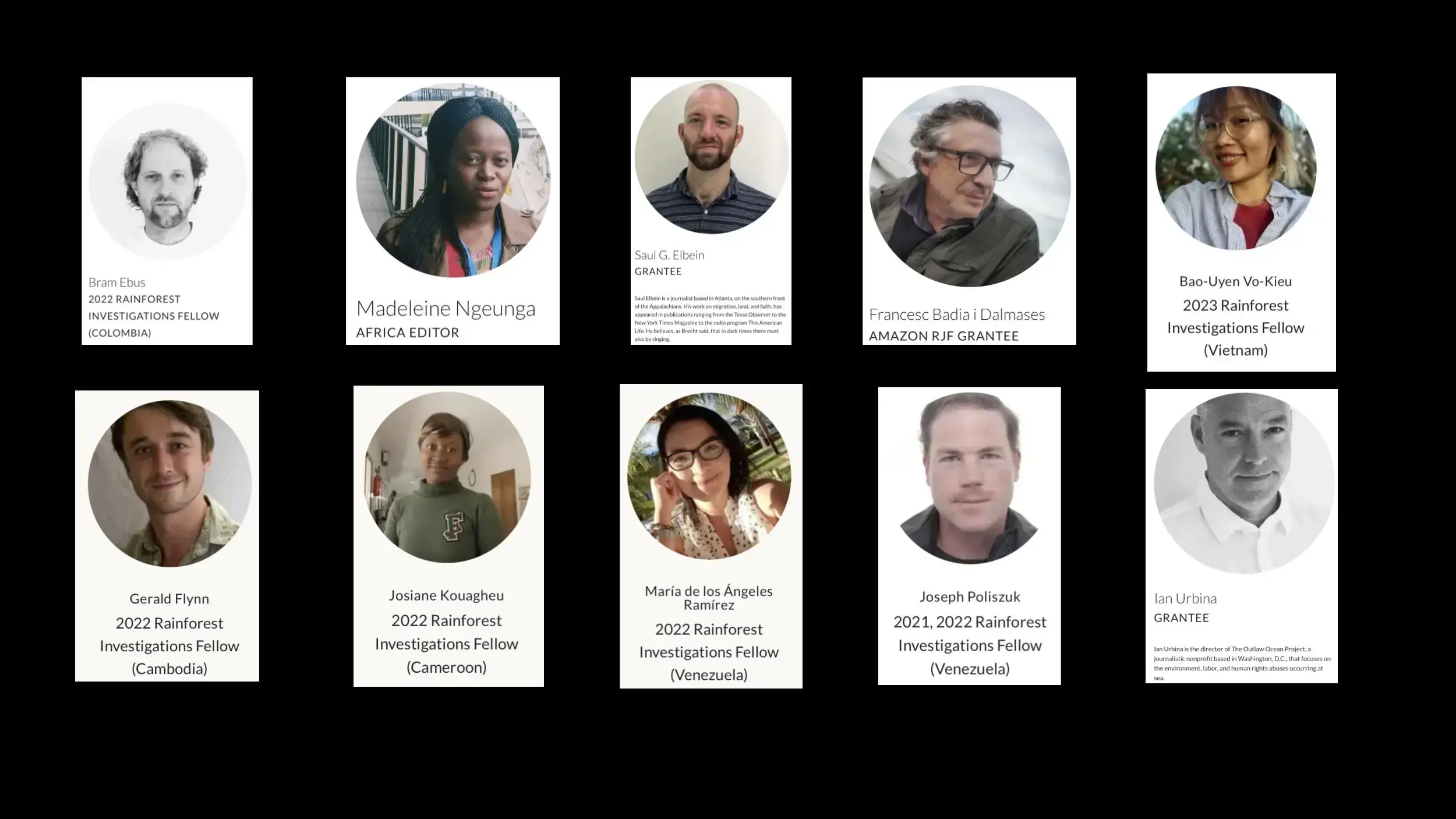
Images provided by the Pulitzer Center.
Thankfully we haven’t had any other situations as dire as Mike’s but harassment and worse is very much a feature of work in this field. These are just a few of the Pulitzer Center grantees who have been arrested, harassed, or detained themselves — or reported on those who have — as they’ve tried to report on environmental abuse and crimes.
Ensuring security for the journalists we support is job one — first by insisting that the outlets for whom they report take full responsibility, second by providing hostile-environment training where needed, and third by insisting that they have security protocols in place and follow the guidelines of safety-first organizations such as A Culture of Safety (ACOS).
We have also done everything we can to foster a community of journalists covering environmental issues. In building this network we have had the huge support of foundations such as the Walton Family Foundation, Laudes Foundation, Howard Hughes Medical Institute, and, most especially, the Norwegian government, which in 2018 gave us a multi-year grant for rainforest reporting that allowed us both to build our own in-house expertise and to support an astonishing array of reporting, capacity-building workshops, and innovative engagement activities around the globe.

Image provided by the Pulitzer Center.
The results are remarkable:
- 610 individual grantees, in 52 countries;
- 317 reporting projects;
- 1,720 publications; and
- 615 different news outlets.

Image provided by the Pulitzer Center.
In 2020 our colleagues in Norway encouraged us to expand our work, to encompass a year-long fellowship supporting cross-border, collaborative investigative projects. The Rainforest Investigations Network (RIN) has been a huge success, a true learning community and a laboratory for collaboration.
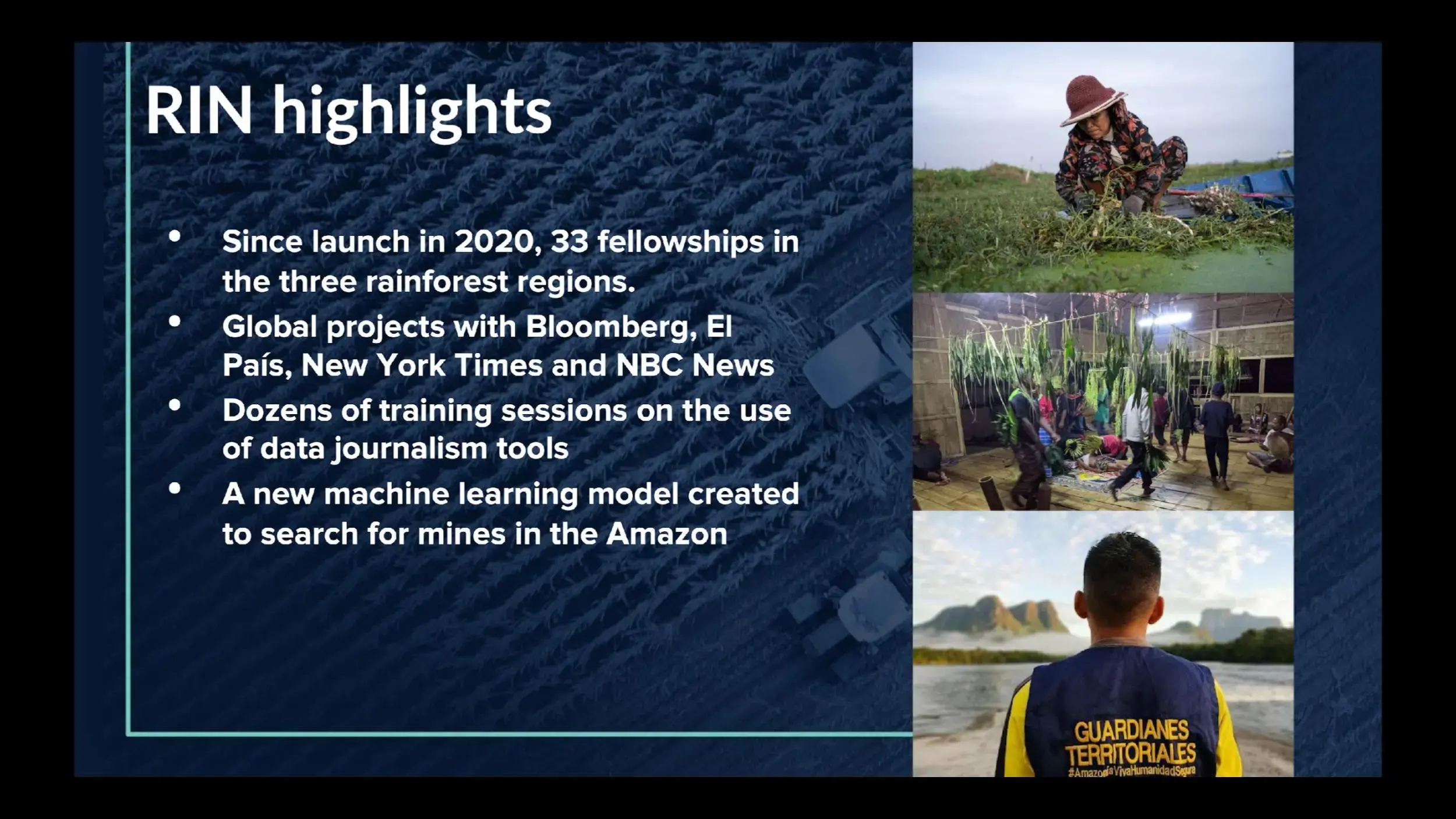
Image provided by the Pulitzer Center.
We’ve had fellows from journalism organizations across the globe — from El Pais and Bloomberg, NBC News and Tempo, The Bureau of Investigative Journalism and The New York Times, and the University of California Berkeley Journalism School. Projects have included the exposé of illegal airstrips and gold mines in the Amazon, the illegal deforestation behind the Southeast Asian nickel mines feeding Tesla’s battery plants, and royal family collusion in the destruction of Malaysia’s peninsular forest.

Image provided by the Pulitzer Center.
Beginning in 2023, again with Norway’s support, we applied this same model— a mix of short-term grants, long-term investigative fellowships, and audience-centered engagement — to our work on the environmental threats to oceans across the globe. Additional support from the Laudes Foundation in the Netherlands made possible a special focus in our work on the nexus between climate change and labor rights. And in 2024 we began another five years of work on these rainforest and oceans topics, plus a focus on transparency governance, and supply chains, with the support of Norway, the Betty and Gordon Moore Foundation, and the Laudes Foundation.
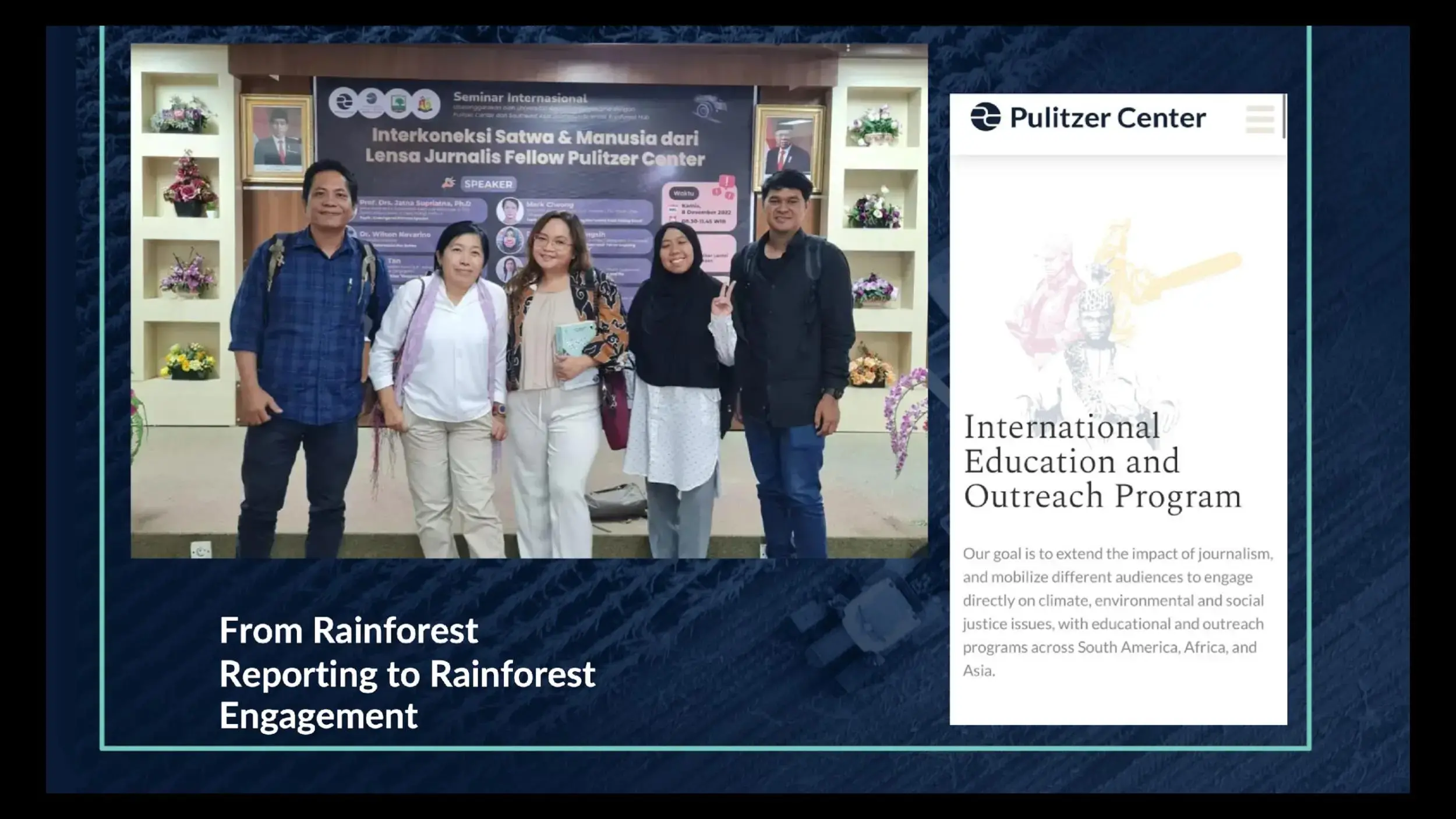
Image provided by the Pulitzer Center.
A key part of this work has been our International Education and Outreach team - Pulitzer staff based in the Amazon, Congo Basin, and Southeast Asia who use our journalism as the basis for engagement with high school and university students as well as young professionals, environmental activists, and the general public.
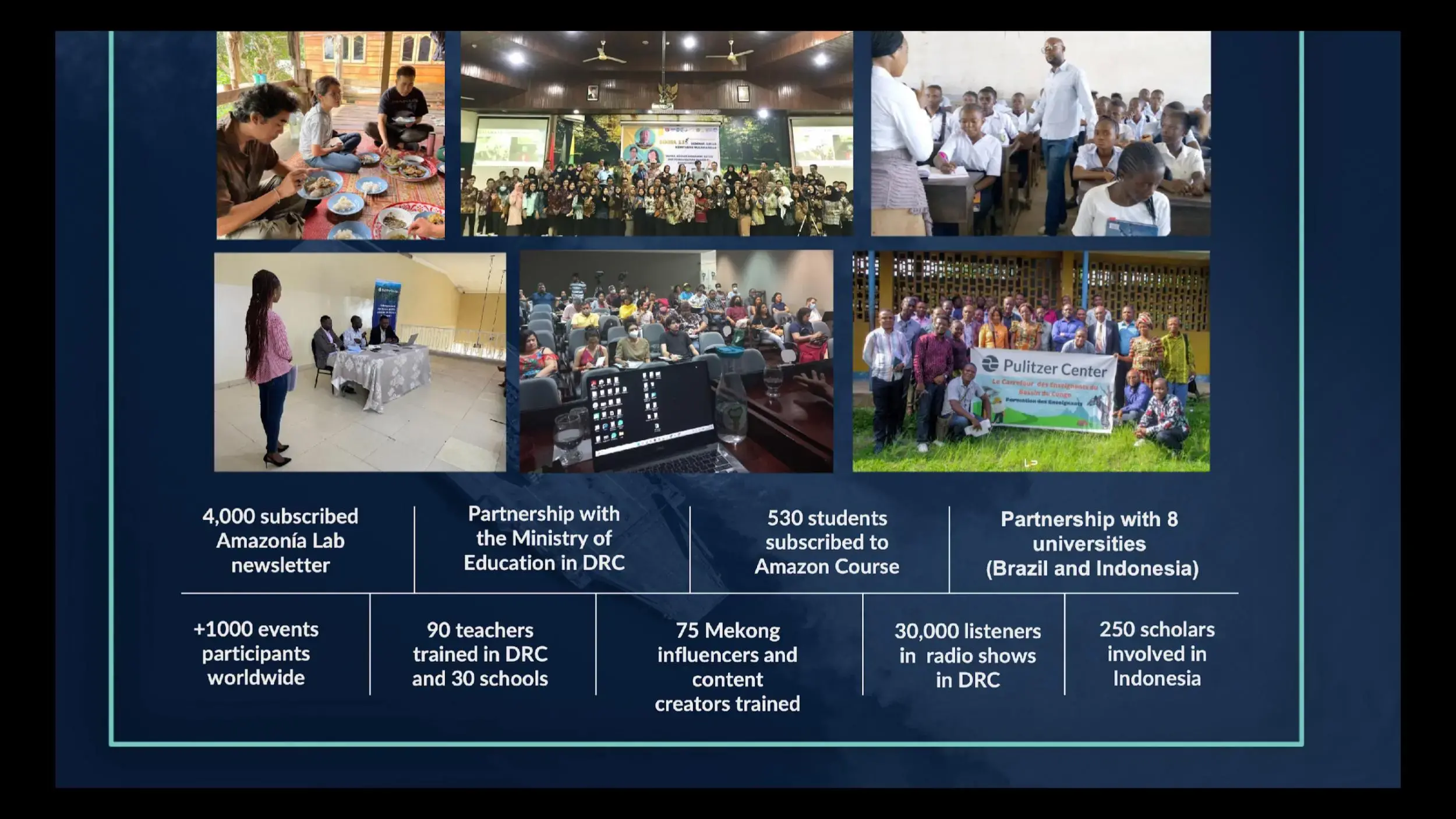
Image provided by the Pulitzer Center.
It’s so exciting to see how this work plays out — in art exhibits in downtown Bangkok, in-person and online environmental courses in Brazilian universities based in the Amazon, “impact seed grants” encouraging Indonesian universities to collaborate with environmental journalists, community radio programs
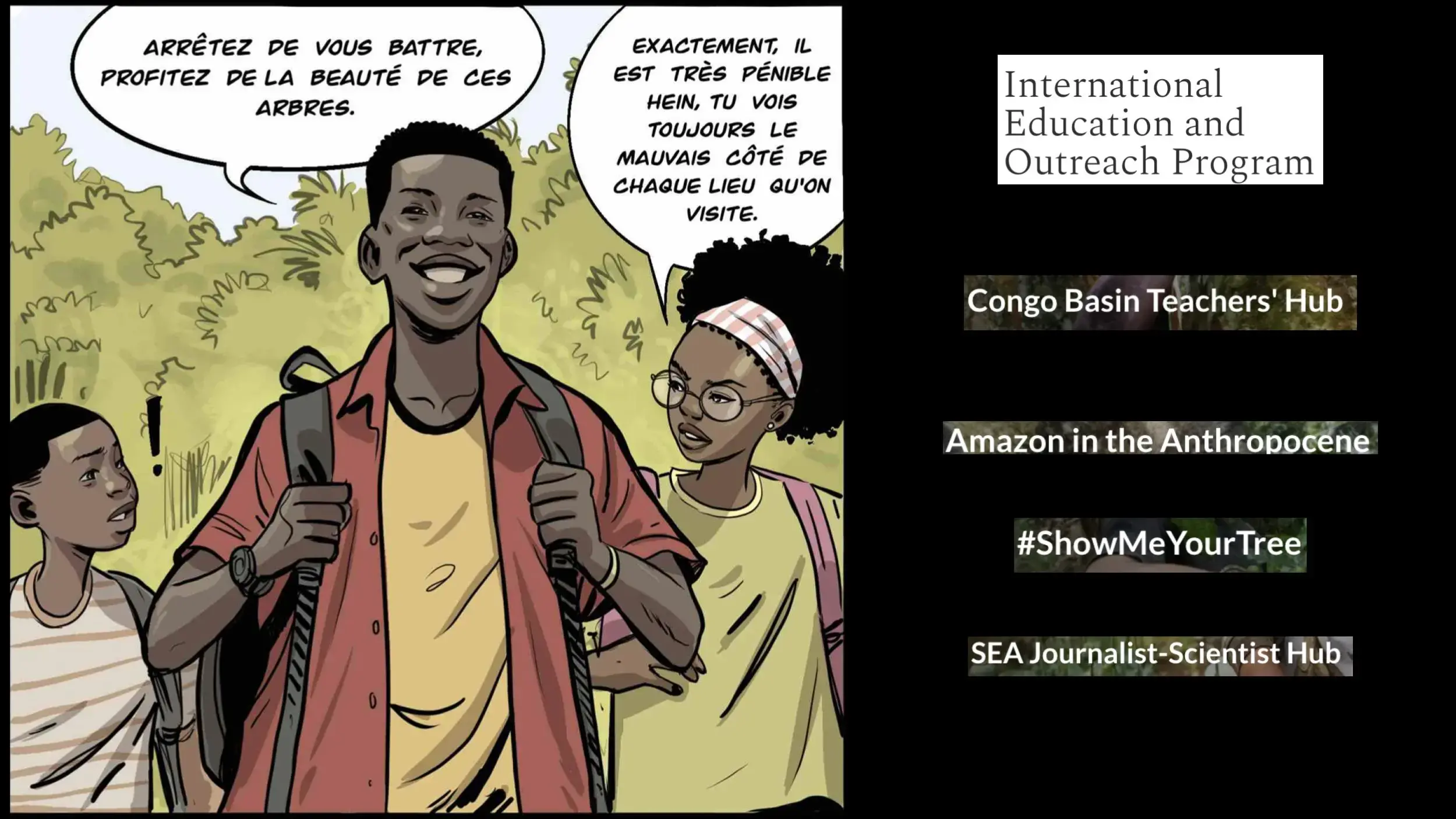
Image provided by the Pulitzer Center.
— and, not least, a comic strip on rainforest /environment issues now in use across 30 plus high schools in the four biggest cities of the Democratic Republic of Congo.
It’s these “communities of learning” that make me optimistic, and excited, about what we can accomplish in the years to come.
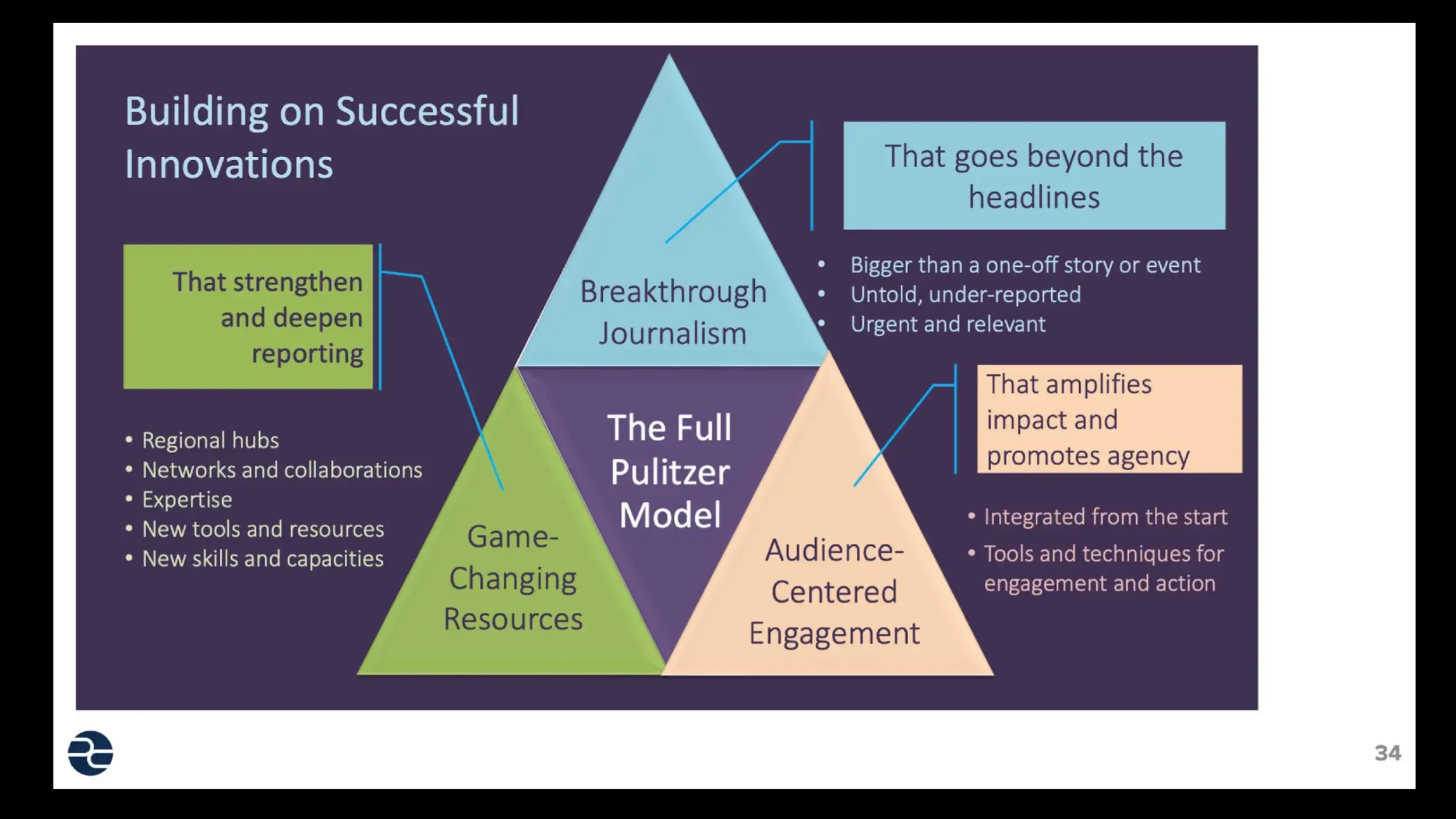
Image provided by the Pulitzer Center.
At the Pulitzer Center we believe in what we call the “full Pulitzer Model.” It starts with:
- Breakthrough journalism, journalism that goes beyond the headlines to get at under-reported or unreported stories that are urgent and relevant;
- Game-changing resources, the staff expertise we’ve built on data and research as well as the network of past and current grantees and the regional hubs we’ve built, all of which can take work to a higher level; and
- Audience-centered engagement, a focus from the start on the key audiences we want to reach with each project and the tools required to make that happen.
I’d like to conclude, in thinking about this World Press Freedom Day devoted to the environment, that the most important lesson from our own experience is collaboration: working with each other to make the most of our mutual resources, to learn from each other, and to focus together on how we can achieve meaningful change.
I know that’s a major goal of the Society of Environmental Journalists, of the Wilson Center, and of the other organizations represented here today: the Earth Journalism Network, PEN America, and Reporters Without Borders. It certainly is, for the Pulitzer Center — and, I suspect, for all of you joining us today.

Journalist Dom Phillips. Image provided by Jon Sawyer/Pulitzer Center. Rio de Janeiro. 2019.
My relationship with Dom Phillips, the freelance journalist with The Guardian who was killed in Brazil, was mostly online. I did have one evening with him in Rio de Janeiro, when he took me to a working-class neighborhood to hear the Brazilian music he loved.
Music was the focus of Dom’s early career, in England, and it was music that first brought him to Brazil. He ended up making his life there, with an increasing focus on the environment, on threats to the Amazon rainforest, and on the Indigenous groups that he believed were key to protecting that vast, irreplaceable resource for the planet.
He made multiple trips to some of the most remote, lawless regions of Brazil but he was not a risk taker. Daniel Camargos recalls that on the trips they made together Dom was meticulous in his preparations, meticulous in devising and sticking to a security protocol. He followed that same routine on his last trip, with Bruno Pereira. It wasn’t enough.
What happened to Dom and Bruno, what has happened to dozens of environmental journalists around the world, are stark reminders that this is dangerous work. Dangerous and important.
I hope that as we mark this year’s World Press Freedom Day, with its focus on environmental coverage, we will each do all we can to make sure this work is done as safely as possible.
Thank you all for being together on this journey.





